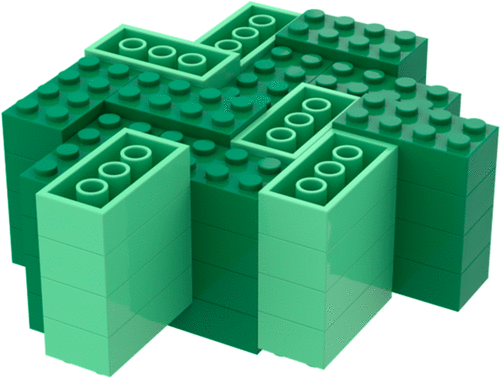当前位置:
X-MOL 学术
›
Cryst. Growth Des.
›
论文详情
Our official English website, www.x-mol.net, welcomes your
feedback! (Note: you will need to create a separate account there.)
Disorderly Conduct of Benzamide IV: Crystallographic and Computational Analysis of High Entropy Polymorphs of Small Molecules
Crystal Growth & Design ( IF 3.2 ) Pub Date : 2020-03-11 , DOI: 10.1021/acs.cgd.0c00096 Noalle Fellah 1 , Alexander G. Shtukenberg 1 , Eric J. Chan 2 , Leslie Vogt-Maranto 2 , Wenqian Xu 3 , Chao Li 1 , Mark E. Tuckerman 2, 4, 5 , Bart Kahr 1 , Michael D. Ward 1
Crystal Growth & Design ( IF 3.2 ) Pub Date : 2020-03-11 , DOI: 10.1021/acs.cgd.0c00096 Noalle Fellah 1 , Alexander G. Shtukenberg 1 , Eric J. Chan 2 , Leslie Vogt-Maranto 2 , Wenqian Xu 3 , Chao Li 1 , Mark E. Tuckerman 2, 4, 5 , Bart Kahr 1 , Michael D. Ward 1
Affiliation

|
Benzamide, a simple derivative of benzoic acid and a common intermediate of pharmaceutical compounds, was reported to form two polymorphs in 1832, but the single crystal structure of the more stable form was not solved until 1959. Nearly 50 years later, the second form was characterized by powder diffraction, followed shortly thereafter by characterization of a third form, a polytype of the most thermodynamically stable Form I. These two new forms, Forms II and III, are metastable. Herein, we describe a fourth polymorph, Form IV, discovered by melt crystallization concurrently with its crystallization under confinement at small length scales (<10 nm), where it is stable indefinitely. Form III exists under confinement in larger pores, and melting point data for different pore sizes corroborate the existence of Form IV below 10 nm. Form IV is highly disordered, precluding indexing of powder diffraction data other than hk0 reflections. Nonetheless, a combination of powder X-ray diffraction and computational crystal structure prediction reveals that Form IV contains a 2D motif resembling that of Form II, but with long-range order in the third dimension masked by ubiquitous stacking faults. This approach relies on distilling a large number of candidate structures to a few possible disorder models based on benzamide tetrads that organize in 2D parquet-like tiles, with organization along the third dimension, that can be modeled with various stacking fault configurations having distinct intermolecular interactions and translations in the dimension orthogonal to the tiling planes. These observations reveal a bewildering crystallographic complexity for such a simple molecule. Nonetheless, the approach described herein demonstrates that challenging structures that may be abandoned prematurely because of poor crystallinity, twinning, or disorder can be solved.
中文翻译:

苯甲酰胺IV的无序行为:小分子高熵多晶型物的晶体学和计算分析
据报道,苯甲酰胺是苯甲酸的简单衍生物,是药物化合物的常见中间体,在1832年形成了两种多晶型物,但直到1959年才解决了更稳定形式的单晶结构。近50年后,第二种形式出现了。其特征在于粉末衍射,然后不久后表征第三种形式,即热力学最稳定的I型的多型。这两种新形式,即形式II和III都是亚稳态的。在本文中,我们描述了第四种多晶型物,形式IV,是通过熔融结晶与在限定的小长度尺度(<10 nm)下无限结晶的同时发现的。表格III存在于较大孔隙中,并且不同孔径的熔点数据证实了10 nm以下IV型的存在。晶型IV高度无序,排除了除hk 0反射以外的粉末衍射数据的索引。尽管如此,粉末X射线衍射和计算晶体结构预测的结合显示,晶型IV包含类似于晶型II的2D基序,但在第三维中具有远距离有序,被普遍存在的堆垛层错掩盖了。这种方法依赖于将苯甲酰胺四联体提取成大量的候选结构,并将其分解为几种可能的无序模型,这些模型以二维拼花状瓷砖的形式组织,并沿第三维进行组织,可以用具有不同分子间相互作用的各种堆叠断层构型进行建模并在与切片平面正交的维度上平移。这些发现揭示了这种简单分子的令人困惑的晶体学复杂性。尽管如此,本文所述的方法证明了可以解决由于结晶性差,孪晶或无序而可能过早放弃的具有挑战性的结构。
更新日期:2020-04-23
中文翻译:

苯甲酰胺IV的无序行为:小分子高熵多晶型物的晶体学和计算分析
据报道,苯甲酰胺是苯甲酸的简单衍生物,是药物化合物的常见中间体,在1832年形成了两种多晶型物,但直到1959年才解决了更稳定形式的单晶结构。近50年后,第二种形式出现了。其特征在于粉末衍射,然后不久后表征第三种形式,即热力学最稳定的I型的多型。这两种新形式,即形式II和III都是亚稳态的。在本文中,我们描述了第四种多晶型物,形式IV,是通过熔融结晶与在限定的小长度尺度(<10 nm)下无限结晶的同时发现的。表格III存在于较大孔隙中,并且不同孔径的熔点数据证实了10 nm以下IV型的存在。晶型IV高度无序,排除了除hk 0反射以外的粉末衍射数据的索引。尽管如此,粉末X射线衍射和计算晶体结构预测的结合显示,晶型IV包含类似于晶型II的2D基序,但在第三维中具有远距离有序,被普遍存在的堆垛层错掩盖了。这种方法依赖于将苯甲酰胺四联体提取成大量的候选结构,并将其分解为几种可能的无序模型,这些模型以二维拼花状瓷砖的形式组织,并沿第三维进行组织,可以用具有不同分子间相互作用的各种堆叠断层构型进行建模并在与切片平面正交的维度上平移。这些发现揭示了这种简单分子的令人困惑的晶体学复杂性。尽管如此,本文所述的方法证明了可以解决由于结晶性差,孪晶或无序而可能过早放弃的具有挑战性的结构。











































 京公网安备 11010802027423号
京公网安备 11010802027423号